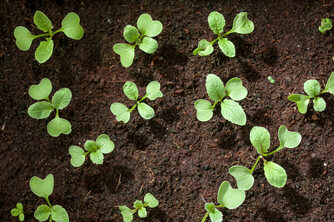
Maybe you've seen the term "regenerative agriculture" around and you're wondering what it means.
According to Dr. Urvashi Rangan, Chief Science Advisor for FoodPrint, regenerative agriculture is "organic plus". Sustainable farming aims to only use the resources that are available; whereas regenerative agriculture focuses on "building health into the ecosystem," starting with increasing soil fertility, according to Rangan. Regenerative agriculture is a holistic approach that focuses first on the soil, and then after the soil, it takes into consideration the health of the animals, workers, farmers, and community.
Chemical-heavy farming techniques—as well as erosion from deforestation, and climate change—are causing a loss of topsoil around the world, which is making land less fertile. The United Nations estimates that if current rates of soil degradation continue, then all the world's topsoil will be gone in 60 years, which will be catastrophic for farmers' ability to grow food for people. With that in mind, we need to stop farming in ways that deplete the soil, and instead farm in ways that renew it. Healthy soil can act as a carbon sink by pulling carbon dioxide from the atmosphere. If implemented worldwide, regenerative agriculture practices have the ability to sequester 50 parts per million of carbon dioxide over the course of a century.
Regenerative agriculture also helps make soil more resilient against weather extremes, such as flood and drought. This is especially important as weather extremes become more likely due to climate change. Regenerative agriculture also helps promote higher nutrient density in plants, which is important considering that climate change is expected to cause plants to suffer nutrient losses.
 RSS Feed
RSS Feed
